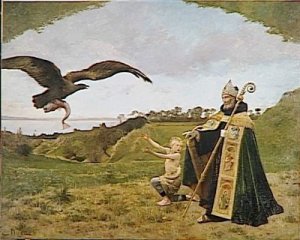- Yggdrasil the world tree. Wägner, Wilhelm. 1882. Nordisch-germanische Götter und Helden
In Norse mythology, Ratatoskr (Old Norse, generally considered “drill-tooth” or “bore-tooth”) is a squirrel who runs up and down the world tree Yggdrasil to carry messages between the unnamed eagle, perched atop Yggdrasil, and the wyrm Níðhöggr, who dwells beneath one of the three roots of the tree. Ratatoskr is attested in the Poetic Edda, compiled in the 13th century from earlier traditional sources, and the Prose Edda, written in the 13th century by Snorri Sturluson. Scholars have proposed theories about the implications of the squirrel.The name Ratatoskr contains two elements rata- and -toskr. The element toskr is generally held to mean “tusk”. Guðbrandur Vigfússon theorized that the rati- element means “the traveller”. Vigfússon says that the name of the legendary drill Rati may feature the same term. According to Vigfússon, Ratatoskr means “tusk the traveller” or “the climber tusk.”
I am looking for more information on this character.

Here’s a nice map of the Tree’s cosmology:






